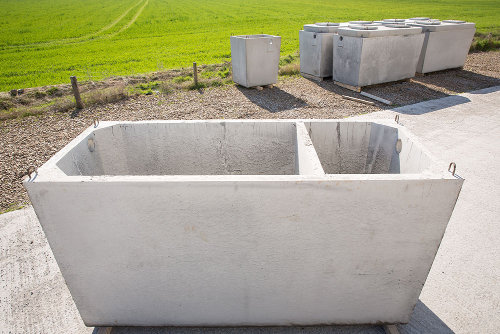What we Offer
At the core of our offerings is the installation of biological septic tanks, a pivotal facet of our operations. Crafted from highly vibrated concrete, these tanks exemplify our commitment to quality and durability.
The black water is connected from the last manhole of the house/building to the inlet pipe of the tank. Once inside, through sedimentation and bacteria action it is biodegraded and changed into water, gases and the suspended solids are dissolved in the water.
The grey water due to its chemical instability, because of fats and detergents, is not allowed into the digester but directed to the soakage area via a grease trap which is provided to intercept the grease.
The KCP biological septic tank applies two principles,
Bio-Degration
The gases and water action after flushing help to stir the sludge, scum and liquid layer which promotes the digestion of solids. This takes place both aerobically (in the presence of air) and anaerobically (in the absence of air). This is due to the presence of both naturally occurring aerobic and anaerobic bacteria. This bacterium digests organic materials and biologically treats black water (human waste) on-site eliminating pathogens and malignant bacteria.
Displacement
The amount of water flashed into the Kenya Cast biological septic tank displaces the same amount through the outlet baffle into the French drain (soakage area).
The displacement process makes it impossible for the tank to fill up and therefore does not require exhausting/emptying.

KCP 1M3
1m - It has a capacity of 1000 litres, It can serve up to 40 users.

KCP 2M3
2m - It has a capacity of 2000 litres, It can serve up to 100 users.

KCP 2.25M3
It has a capacity of 2250 litres, It can serve upto 150 users.

KCP 3M3
3m - It has a capacity of 3000 litres, It can serve up to 250 users.

KCP 4M3
4m - It has a capacity of 4000 litres, It can serve up to 400 users.
Specialist services
Installation
We design and install bio-septic systems that treat black water (human waste) on-site, eliminating pathogens and malignant bacteria, so that the effluent can be safe for discharge back into the environment
Consultation
We consult on building projects and offer our expert advice on how best to situate sewer systems to achieve the optimal and most convenient way to handle wastewater.
Reuse & Recycling
We offer clients the option to treat wastewater to a higher standard - making wastewater clear, odourless, and fit for the environment. This water becomes available for reuse in irrigation, carwash, toilet flushing, and so on.
Kenya Cast Products limited (KCP LTD)
FAQ's
It is a reinforced concrete Monoblock tank, that uses naturally occurring aerobic and anaerobic bacteria to digest organic material and biologically treat black water (human waste) on-site eliminating pathogens and malignant bacteria.
With the bio-septic tank – NO. As long as no non-biodegradable materials are put in the system (like grease) the system should operate with no obstacles. The grease interceptor (grease trap) however requires regular checking. Once it fills with grease, it must then be emptied and cleaned.
Depending on the number of people using it can vary from twice a year to twice a month. domestic tanks require less servicing than commercial ones.
YES. If a proper site assessment is done early enough, a plan can be made on how to re-use or dispose of the effluent from the bio-septic system regardless of the topography of the area. Our biosystems can be installed anywhere.
NO. Our systems rely on naturally occurring bacteria and do not require any additives at any point.
The domestic tank is only 1m3 and occupies a very small space. The resulting effluent can be dealt with in several ways and depending on the site and the client, there might not be any need for a soakaway area. This is also determined after a site assessment.
